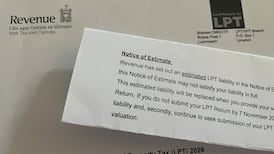THE examiner to the company which was developing the former Iveagh Baths leisure complex in Dublin is negotiating with five parties who are interested in completing the venture.
It is understood that the investors, some of whom are involved in the leisure business, are willing to invest between £1 million and £1.7 million to complete the project and get it under way.
The £1.2 million leisure centre was due to open last October, but was delayed. The company developing it, Colmant, went into receivership last month but the High Court appointed Mr Jason Sheehy, of Cooney Carey chartered accountants, as examiner shortly afterwards.
Around 75 per cent of the work on the project has been completed. Facilities include a swimming pool, aerobics studios and a gymnasium. It is understood that another £400,000 to £500,000 would complete the centre which is located near Dublin Castle. About 800 people signed up as members in advance of the complex opening.
Membership fees varied from £495 a year for single membership to £700 a year for couples. Most people had already paid a deposit of around £100.
Mr Sheehy will have to return to the High Court on March 28th and tell the court whether he has a scheme of arrangement, which will satisfy shareholders and creditors, in place. If he can do this, it is thought that work on finishing the complex could begin very quickly and it could be open by the summer.
The property was sold to pubs owner and cement manufacturer Mr Sean Quinn for £700,000 two days after a receiver was appointed. It is understood that the examiner has told investors that this contract does not prejudice the survival of Colmant.









